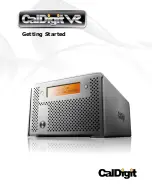
SBRGB
•
12
•
Nip or "trim" all excess wires extending beyond each solder connection.
Take care that wire trimmings do not become lodged in PC board solder
connections.
Enough said. . . Let's get building!
You are going to want to use a VERY clean desk space to assemble your
surface mount kit. Drop a resistor into even the smallest amount of clutter and
it will disappear like magic. You would swear a magician was hovering over
your shoulder some times when a part disappears. There are probably
enough parts hidden in the papers on my desk to build an entire
communications system, but we won’t go there… the Boss might read this!
While building, select only one surface mount part at a time. Don’t pour them
out all over the desk! Retrieve a single component (I wet my finger a bit to
have a part stick to it) and place the part in the open work area of your desk.
This makes it easier to pick it up with the tweezers and orient the part so the
markings are on the top for easier trouble shooting if needed. It also provides
me with Tidily Winks practice; *Ping* and I hear the part bounce off of the
other wall and down into the heat register. Hence the extra parts! If you are
really careful, this won’t happen to you.
1. We will begin with a few resistors first. Locate and install R6, the 10K
ohm resistor (marked 103); see SBRGB Assembly for surface mount tips
and don’t worry, we’ve included extra resistors in case one should fly off.
2. Install R5, the other 10K ohm resistor (marked 103).
3. Install R3, a 100 ohm resistor (marked 101).
4. Install D3, the 1N4148 diode in a three pin black package. This
package style is called an SOT-23 which actually covers more than just
one pin layout style. You can have an SOT-23 with 3 pins or 5 so it can
get confusing at times. This diode is used to protect your circuit in case
the battery power is accidentally installed backwards.
5. Locate U1, the pre-programmed micro-controller. Note the dimple on
the top side of the part labeled PIC12C509SN, this indicates pin 1 of the
IC. Look at the silkscreen on the circuit board and find the notch to help
you position the IC correctly. Pre-tin the circuit board by dabbing some
solder on the pad where pin 1 will be placed. Position the part with your
tweezers and solder pin 1 of the IC to the pad. Position the part so that all
eight leads line up properly and stay centered over all eight pads to avoid
shorting pins together.






































